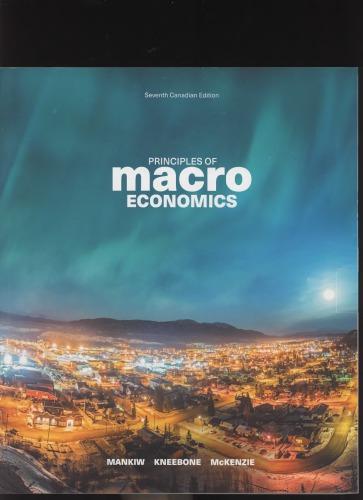4. Suppose an economy is in long-run equilibrium. a. Use the model of aggregate demand and aggregate
Question:
4. Suppose an economy is in long-run equilibrium.
a. Use the model of aggregate demand and aggregate supply to illustrate the initial equilibrium (call it point A). Be sure to include both short-run and long-run aggregate supply.
b. The central bank raises the money supply by 5 percent. Use your diagram to show what happens to output and the price level as the economy moves from the initial to the new short-run equilibrium (call it point B).
c. Now show the new long-run equilibrium (call it point C). What causes the economy to move from point B to point C?
d. According to the sticky-wage theory of aggregate supply, how do nominal wages at point A compare to nominal wages at point B? How do nominal wages at point A compare to nominal wages at point C?
e. According to the sticky-wage theory of aggregate supply, how do real wages at point A compare to real wages at point B? How do real wages at point A compare to real wages at point C?
f. Judging by the impact of the money supply on nominal and real wages, is this analysis consistent with the proposition that money has real effects in the short run but is neutral in the long run?
Step by Step Answer:

Principles Of Macroeconomics
ISBN: 9780176591977
7th Canadian Edition
Authors: N. Mankiw, Ronald Kneebone, Kenneth McKenzie






